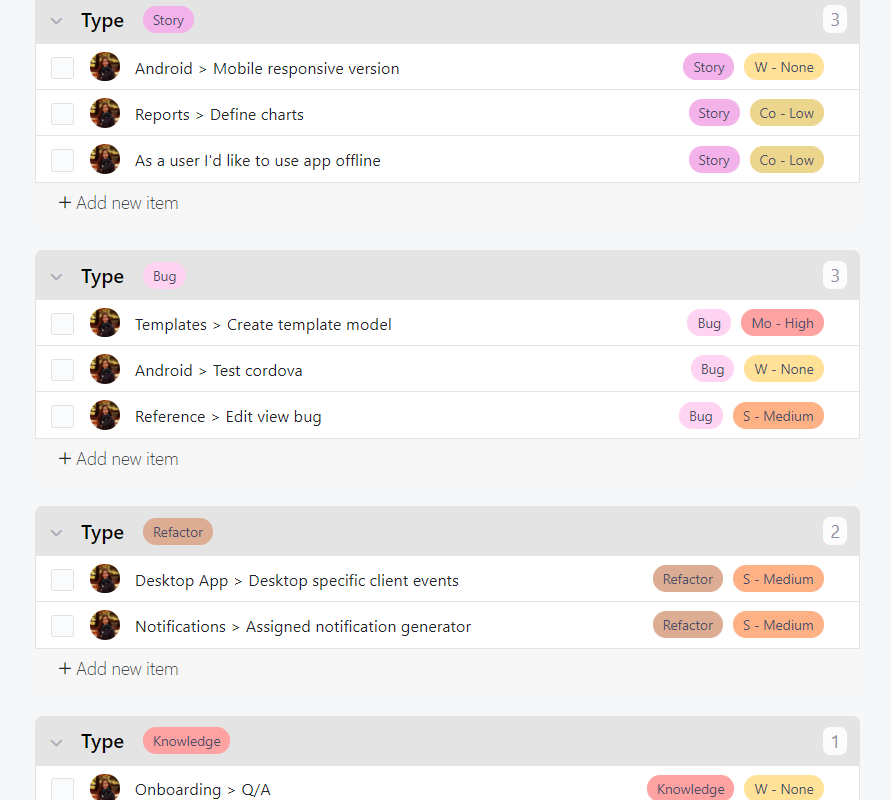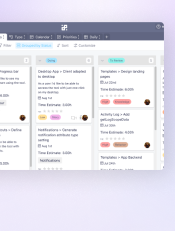Product Backlog
A product backlog is a prioritized list of product requirements. Simply put, a product backlog is a list of everything that needs to be done to create the product - features, defect fixes and other technical work.
A typical product backlog in Scrum contains four different types of requirements (although you can add more):
- User stories
- Bugs
- Refactoring
- Knowledge acquisition
When you create the product backlog for the very first time, you’ll want to fill it out with the best-known requirements that are aligned with your overall product strategy - your vision, your goals and initiatives.
But as your product grows, so should the backlog. One of the basic principles of agile development is continuous work on the product, which is why the product backlog is never complete.
If things go according to plan, your product will evolve and your community will grow, which means that you will receive a lot of suggestions from users and the team in order to make your product bigger and better every week.
Product Backlog Management
During the sprint planning meeting, you and your team will need to turn the product backlog into the actual to-do list - or the sprint. Product manager and the Scrum Master (or the head of development) should come together to figure out which of the items from the backlog should go into the next sprint, making sure to choose the optimal number of items and the most important items that can be delivered within the coming sprint - which is all part of product backlog management.
A great backlog should state clearly which ideas from your roadmap should be done next and it should ensure that the most impactful features are delivered in each new release.
Your product backlog should also be a reliable source of information for the whole team. Reserve one folder for the product backlog and make sure to keep all the relevant information there.
This is how a product backlog template looks in Infinity:
What Are User Stories and How to Write Them
Types of Product Backlog Tasks


Product Management

Lifetime Discount Is Waiting
Enjoy 50% off the Unlimited White Label plan. All features, unlimited users, and full white label access — one fixed price for life.
Get the Special Offer







